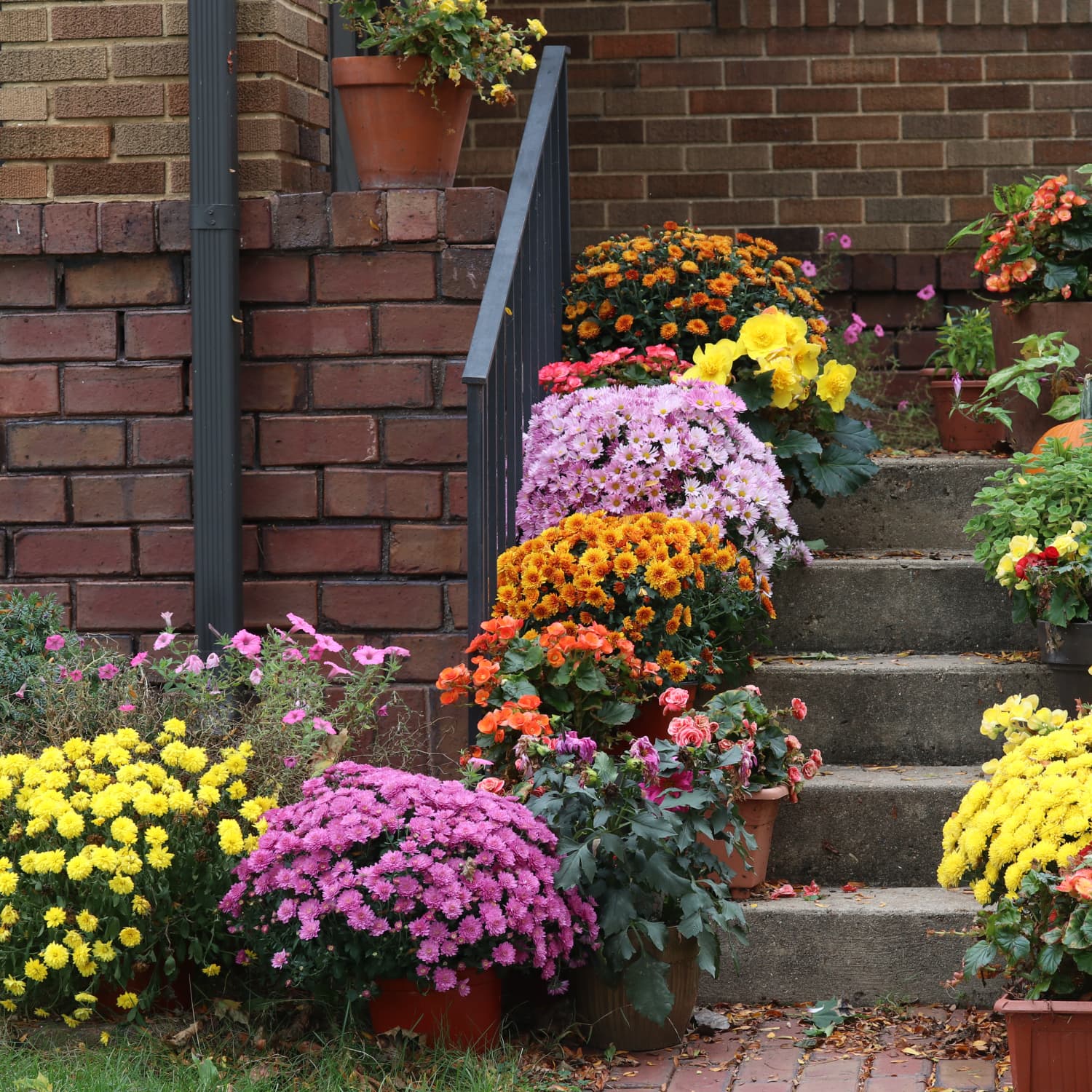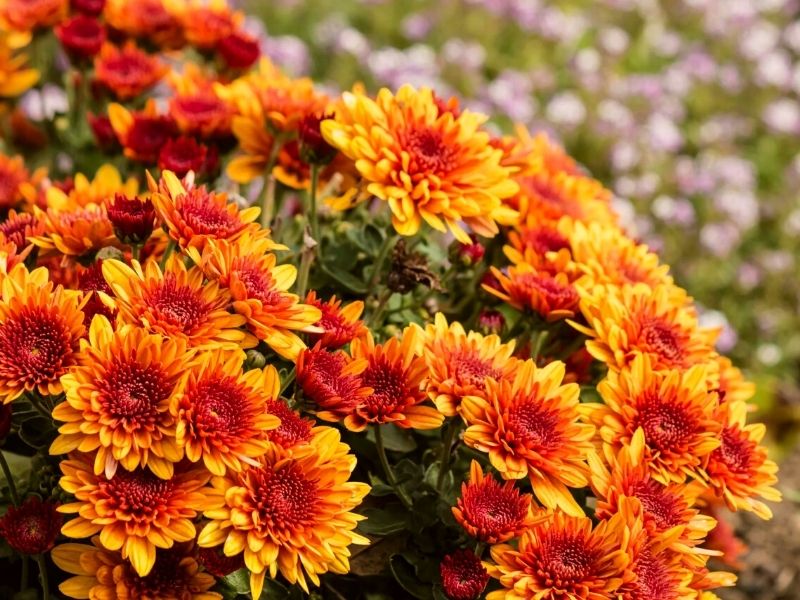Celebrate Autumn’s Beauty: Your Ultimate Guide to Fall Plants Success

The Fall Garden Mastery System: Advanced Strategies, Shortcuts, and Real-World Wins for a Spectacular Autumn Landscape
There’s a moment every September—when the air sharpens and daylight slips away—that separates the casual gardener from those who truly master fall planting. Most folks see the season’s end, toss in a few mums, and call it good. But if you want an autumn garden that thrives while others fade, you need a complete system—one built from hard-won lessons, clever shortcuts, and techniques even pros sometimes overlook.

This is that system. Not just “what to plant,” but how to orchestrate your space so fall becomes your most rewarding gardening season yet.
1. Why Fall Is the Secret Weapon of Gardeners Who Know
Back in 2016, I’d written off my vegetable patch by Labor Day—until I visited a friend who’d turned his backyard into an autumn oasis: kale gleaming like emeralds under morning frost, pansies smiling through chilly drizzle, garlic shoots poking up between fading marigolds. He grinned as he handed me a trowel. "You’re missing half the fun," he said.
Here’s what most people miss:
- Soil is still warm enough for roots to explode with growth.
- Cool nights mean fewer pests (and sweeter greens).
- Moisture comes more reliably, reducing watering stress.
- Many fall plants improve after frost; their colors deepen or flavors sweeten.
Once you unlock these advantages—and optimize for them—you’ll wonder why anyone lets their garden wind down so early.
2. The Master List: High-Impact Fall Plants (With Pro Tips)
Edibles That Outperform
- Kale (‘Lacinato’ or ‘Red Russian’): Sown mid-August or transplanted by early September; flavor intensifies after first light frost.
- Shortcut: Use nursery seedlings if late—skip germination stress.
- Broccoli (‘Waltham 29’): Start seeds indoors in July or buy robust starts early August.
- Advanced: Cover with mesh tunnels to block cabbage butterflies (trust me—they’ll find you).
- Spinach (‘Bloomsdale’): Direct-sow late August; will overwinter under mulch in zones 6+.
- Pro move: Sow extra thickly; thin seedlings for baby greens while letting others mature.
- Garlic: Plant cloves October through November; mulch heavily (4” straw) for bigger bulbs next summer.
- System hack: Soak cloves overnight in kelp solution before planting = faster root set.
- Carrots (‘Napoli’): Sow seed late August; harvest until soil freezes.
- Technique: Mix carrot seed with sand for even distribution—no more clumped roots!
Ornamental Powerhouses
- Chrysanthemums: Buy hardy perennial varieties (not florist types); plant at least 6 weeks before frost for reliable returns year after year.
- Twist: Pinch back early buds until mid-July to force bushier blooms in fall.
- Pansies & Violas: Choose overwintering strains if you want color into spring—‘Matrix,’ ‘Icicle.’
- Trick: Water only midday as temps drop to prevent root rot from cool damp nights.
- Ornamental Cabbage/Kale: Plant en masse along borders—colors intensify after hard frost!
- Experiment: Try interplanting with tulip bulbs for double spring impact.
Perennials & Grasses
- Asters (‘Purple Dome’), Sedum ‘Autumn Joy’: Attract pollinators deep into fall; deadhead lightly to extend bloom period.
- Dialog tip (from my neighbor Maria): “Leave stems till March—the bees need winter shelter.”
- Heuchera (Coral Bells), Miscanthus grass: Layer textures for movement and lasting color well into November.
3. The System: Step-by-Step Fall Planting Blueprint
A. Assess & Map Your Microclimate
Don’t trust generic advice—your yard isn’t average! In my north-facing beds, sunlight vanishes by October while the south border basks two hours longer daily. Here’s how I learned:
- Walk your space at 9am, noon, and 3pm on a sunny day—note which beds still get light post-equinox (Sep 21).
- Mark out wind-prone corners vs protected nooks.
Shortcut: Use the Sun Seeker app on your phone to visualize sun angles all season.
B. Soil Supercharge Protocol
Fall success starts below ground level!
- Remove tired annuals/weeds; loosen soil at least 8” deep.
- Add 2” compost + sprinkle slow-release organic fertilizer (Espoma Garden-Tone is my go-to).
- For containers: dump old potting mix onto compost heap; refill pots with fresh mix + handful worm castings per gallon of soil.
Advanced hack: After amending beds but before planting, solarize stubborn weed patches under clear plastic for a week—the heat wipes out seeds fast without chemicals.
C. Strategic Plant Placement
Think like a chess player—not all pieces move the same way!
- Tallest perennials/grasses on north side of beds = no shading smaller edibles/annuals behind them as sun angle drops.
- Group plants by water needs (drought-tolerant sedum/ornamental grass together; moisture-loving pansies/kale together).
System shortcut: Pre-arrange pots/plants atop soil BEFORE digging holes—you’ll catch design mistakes instantly!
D. Timed Planting Sequences
Timing is everything—and here’s where most gardeners fail:
- Check your region’s first expected frost date (almanac.com/gardening/frostdates).
- Count backward by each variety's “days to maturity”—add one week buffer for surprises (“October heatwave,” anyone?).
- Stagger sowings every two weeks through September/early October so harvest/bloom continues well past Halloween.
I learned this hard way when one year my entire lettuce crop bolted during an oddly hot October…while my second sowing thrived when cool returned.
4. Next-Level Techniques: Extend Your Season Like a Pro
Row Covers & Low Tunnels
A $15 investment in floating row cover fabric can keep spinach/kale growing three weeks past your neighbors’. Lay it directly on crops at night or drape over lightweight PVC hoops for DIY low tunnels—a trick I borrowed from market farmers after seeing spinach survive December snow dustings!
Cold Frames & Cloches
Build a simple cold frame from scrap wood + salvaged window glass—or grab ready-made kits online ($60–$150). Position frame facing south/southwest at slight angle; vent daily when temps spike above 50°F inside.
For individual plants (like young broccoli), cut bottoms off clear milk jugs and pop overtop each seedling during cold snaps—it works shockingly well!
Mulching Masterclass
Forget thin layers—a proper blanket is key:
- For edibles: Use clean straw or shredded leaves layered at least four inches thick around roots once nights dip below 45°F regularly.
- For ornamentals: Shredded bark or pine needles prevent freeze-thaw cycles uprooting shallow-rooted perennials like mums/heuchera.
5. Common Pitfalls—and How To Outsmart Them
Mistake #1: Late Starts = Disappointing Results
I lost entire broccoli rows my first fall because I planted too close to Halloween…roots had zero time to establish before ground froze solid.
Solution: Always start earlier than feels necessary—even if it means sweating through transplanting chores on Labor Day weekend!
Mistake #2: Overwatering As Days Cool
Cooler weather = slower evaporation = soggy roots if you keep summer habits alive.
System Fix: Only water when top inch of soil dries out (“fudge brownie not cake batter” texture test). Morning watering prevents fungal disease overnight too!
Mistake #3: Ignoring Shifting Light
What was full sun in July may become full shade in October thanks to lower sun angles and leaf drop—or shadows from buildings/trees changing with season.
Remedy: Do that multi-time-of-day walk-through mentioned above before finalizing plant locations each year.
Mistake #4: Forgetting Pest Cycles Change
Slugs thrive as leaves pile up! Meanwhile cabbage worms vanish after first real cold snap—but mice might move into mulched beds seeking warmth near carrots/beets…
Countermove: Lay down copper tape around raised beds for slugs/snails; check under mulch weekly during transition months.
6. System Shortcuts & Advanced Tricks Most Guides Skip
Succession Sowing Scheduler
Set calendar reminders every two weeks from mid-August through late September (“Sow lettuce,” “Start radishes”). It takes five minutes per round but guarantees continuous salad greens until Thanksgiving—even Christmas some years with row covers!
Companion Plant Combos That Work Double Duty
Try garlic among rose bushes/mums—not only does it repel aphids/nematodes naturally, but its green shoots add vertical interest alongside flowers all winter long.
Soil Health Booster Shot
Before final mulch-down in November, scatter crimson clover or hairy vetch seed between rows as living cover crops—they fix nitrogen AND provide green manure come spring dig-in.
7. Tools & Tech That Save Time & Headaches
| Tool / Resource | What It Solves | My Experience / Cost |
|---|---|---|
| Hori Hori knife | Digging/weeding/cutting | Replaced three tools ($30) |
| Floating row cover fabric | Extends edibles' season | $15 gets me two extra harvests |
| Cold frame kit/self-built box | Protects tender crops | Salvaged old window + $20 lumber |
| Metal mesh tunnels | Block insects/pests | Saved whole broccoli crop one year |
| Weather app w/frost alerts | Timely protection | Push notifications saved me twice last year |
Bonus resource tip: Sign up for your local Cooperative Extension Service newsletter—they send out region-specific warnings (“Cut back asters now!”) that have saved me hundreds of dollars in lost plants over time.
8. Case Studies From My Own Backyard (& Beyond)
Urban Salad Machine
Two years ago I challenged myself—could I grow salads on nothing but my apartment balcony? Used thrift-store planters lined up along the railing facing west:
Dialogue with neighbor: “You know those won’t last past September?”
Me (smiling): “Want some arugula next month?”
By mid-November—with nightly shower curtain covers—I was clipping mixed greens twice weekly long after her petunias collapsed.
Family Pumpkin Revival
My dad swore pumpkins were impossible after mildew struck every July…until we tried transplanting healthy vines only AFTER old squash faded out mid-August:
First attempt failed due to overcrowded roots—lesson learned! Year two we spaced transplants further apart + covered young vines nightly = carved our own jack-o-lanterns Halloween eve.
Pollinator Sanctuary Experiment
Tired of barren flowerbeds by October? One autumn I interplanted New England asters and goldenrod along our fence line—and left stems standing all winter instead of cutting back:
Now bees linger till Thanksgiving…and beneficial insects emerge stronger each spring from hollow stalk hideaways.
9. Troubleshooting Table – When Things Go Sideways
| Problem | Root Cause | Rapid Response |
|---|---|---|
| Wilting despite cool temps | Transplant shock | Deep water + shade new plants briefly |
| Yellow leaves/fuzzy spots | Fungal disease | Prune affected parts + spray neem oil |
| Seeds not sprouting | Soil temp too low/wet | Resow shallower/wait warm spell |
| Pansies stop blooming | Heat snap | Pinch spent blooms/reduce water |
| Chewed leaves overnight | Slugs/snails/caterpillars | Handpick dusk/dawn + use eggshell barrier |
| Mums don’t return | Wrong variety/late planting | Buy hardy types/start earlier next yr |
Remember—the best gardeners aren’t perfect; they’re relentless troubleshooters!
10. Next-Level Action Plan – Your Roadmap To Autumn Mastery
Here’s how you build an unstoppable fall garden year after year:
1️⃣ Map sunlight shifts post-equinox using phone apps/walkthroughs
2️⃣ Test and amend soil specifically for fall crops (+ add compost!)
3️⃣ Build microclimates using row covers/cold frames—all reusable investments
4️⃣ Plan successive sowings by setting digital calendar reminders now
5️⃣ Shop local nurseries early September—grab both ornamentals AND edible transplants/seeds
6️⃣ Group plants by water/light needs—not aesthetics alone!
7️⃣ Install slug/mouse barriers proactively before trouble starts
8️⃣ Mulch deeply once nighttime lows hit upper forties Fahrenheit
9️⃣ Take notes/photos each week ("What worked? What fizzled?")
🔟 Join community gardens/clubs—a single conversation can save seasons of trial/error
Final Thoughts From The Problem-Solver’s Bench
Mastery isn’t about knowing everything—it’s about building systems that let you adapt quickly when nature throws curveballs…and learning shortcuts that multiply results without multiplying effort or expense.
So experiment this fall with new combos—a purple kale border beside fiery mums? Garlic tucked between pansies? Trust your observations more than any generic list online—including mine! And remember every failure is just another data point feeding next season’s success story.
Picture yourself sipping cider beside blooming violas under silvery frost this November—not because luck favored you…but because you mastered both basics AND advanced moves others overlook.
The only real mistake? Never starting at all—or assuming there’s nothing left to master once summer ends.
Dig deep this autumn—the rewards are waiting right beneath the surface!



